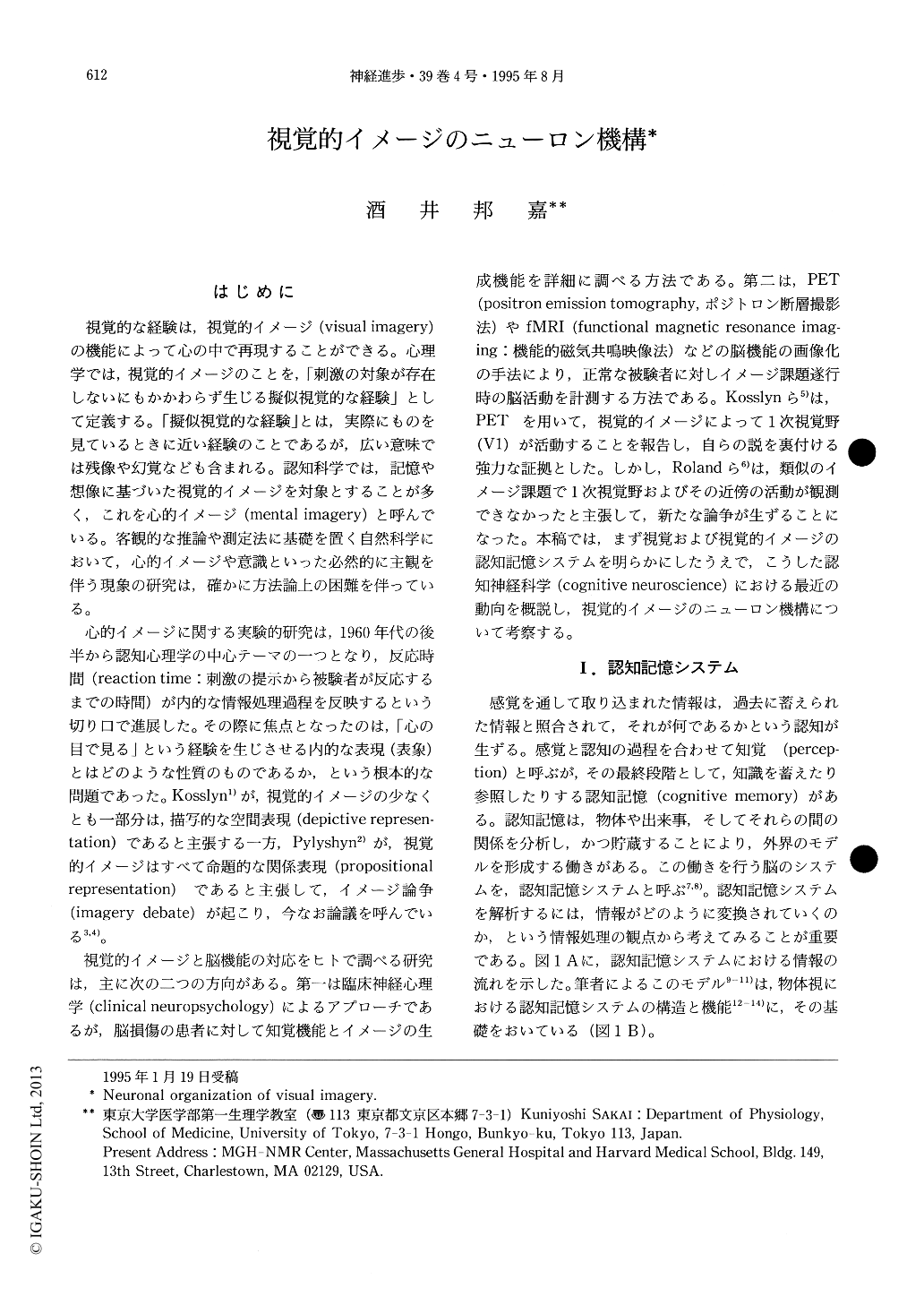Japanese
English
- 有料閲覧
- Abstract 文献概要
- 1ページ目 Look Inside
はじめに
視覚的な経験は,視覚的イメージ(visual imagery)の機能によって心の中で再現することができる。心理学では,視覚的イメージのことを,「刺激の対象が存在しないにもかかわらず生じる擬似視覚的な経験」として定義する。「擬似視覚的な経験」とは,実際にものを見ているときに近い経験のことであるが,広い意味では残像や幻覚なども含まれる。認知科学では,記憶や想像に基づいた視覚的イメージを対象とすることが多く,これを心的イメージ(mental imagery)と呼んでいる。客観的な推論や測定法に基礎を置く自然科学において,心的イメージや意識といった必然的に主観を伴う現象の研究は,確かに方法論上の困難を伴っている。
心的イメージに関する実験的研究は,1960年代の後半から認知心理学の中心テーマの一つとなり,反応時間(reaction time:刺激の提示から被験者が反応するまでの時間)が内的な情報処理過程を反映するという切り口で進展した。その際に焦点となったのは,「心の目で見る」という経験を生じさせる内的な表現(表象)とはどのような性質のものであるか,という根本的な問題であった。
Our visual experience can be mentally reproduced by the function of visual imagery. Current develop-ments of human brain mapping methods such as positron emission tomography (PET) and functional magnetic resonance imaging (fMRI) have enabled neuroscientists to search for cortical areas which areinvolved in visual perception and visual imagery. I have proposed that visual imagery is implemented by the same neural mechanism that subserves memory retrieval in vision. This proposal agrees with the recent PET studies, which reported that occipitotemporal visual association areas are involved in visual imagery.

Copyright © 1995, Igaku-Shoin Ltd. All rights reserved.


